

CULTURAL CAPITAL OF NATURE
The entire area of Bohinj lies within the Julian Alps UNESCO Biosphere Region, 66% of the municipality’s territory lies within Triglav National Park, 84% of the municipality’s area is protected under Natura 2000.




ITALY












Valley









Soča
TOLMIN
KOBARID
BOVEC
Soča
Soča


Karavanke







B O H I N J



























S L O V E N I A

The Julian Alps define the Slovenian space in the north-west of the country. Bohinj is at their heart, between Triglav and the Soča Valley.
Bohinj is not a place, but a vast alpine area where people coexist with nature and tourism. Most of Bohinj lies within the Triglav National Park, which is both an advantage and a challenge for the locals, and a tribute to its exceptional natural wealth, special features and biodiversity. Bohinj never disappoints and leaves no one indifferent.
Sava
Sava Bohinjka
JESENICE BLED ŽIROVNICA
Sava Dolinka
RADOVLJICA
Triglav
GORJE

Bohinj belongs to the UNESCO MAB (Man and the Biosphere) protected area, which protects the natural environment and the traditional way of life of the local people.

UNIQUE BOHIN J
A destination for people who respect and understand nature.
The largest permanent natural lake in Slovenia lies right in the heart of Triglav National Park and in the embrace of the Julian Alps. This is Lake Bohinj – with a unique name that resembles the word “God” in Slovene (“boh” means God in local dialect).
High above the lake and valley, on picturesque pastures, local people still preserve the traditional way of making cheese, expressing their gratitude for Bohinj’s nature.
Bohinj’s mohant cheese has the European designation of protected geographical origin. Authentic tradition, culture and creativity of people in this area are united under the Bohinjsko/From Bohinj brand.
Bohinj is a green oasis of responsible tourism in the Julian Alps. Natural features abound, including the famous Savica Waterfall, the Mostnica Gorge and numerous watercourses.
Bohinj’s landscape is protected as a landscape of national importance and has been part of Triglav National Park for 100 years, since the Triglav Lakes Valley was protected as an Alpine conservation park in 1924.



BOHIN J IS A LEADER IN RESPONSIBLE TOURISM
Our ancestors paved the way for preserving Bohinj as one of the most beautiful examples of an exceptionally diligently protected alpine idyll in the entire Alps.

With public transport and regional connectivity, we are improving the quality of our hospitality, access to attractions, providing a better experience of Bohinj and contributing to reducing carbon emissions.
Respect the beauty of Bohinj and let’s preserve it together.
Bohinj, voted one of the 100 most sustainable destinations in the world by Global Green Destinations, is the recipient of several prestigious international awards for sustainable tourism.


In 2021, Bohinj received the highest national award, i.e. it became the first Slovenian destination with the Slovenia Green PLATINUM award.
Alpine Pearls is an association of 18 tourist destinations in Austria, Germany, Italy and Slovenia committed to sustainable tourism. Bohinj is an important member of this association.
In 2022, Bohinj acquired the Best Tourism Village title by UNWTO.
In 2019, the European Commission members recognised Bohinj as one of 100 most sustainable destinations in Europe, in 2020 it was ranked among the safest destinations in Europe.

In 2019, Bohinj received the prestigious silver award of the World Travel Market London, i.e. in the Creating Sustainable destination Model: Responsible Tourism category.
CULTURAL CAPITAL OF NATURE
The astonishing scenery of Bohinj’s nature, its remoteness and integrity, as well as its biodiversity are an eternal inspiration for explorers, artists and athletes. Bohinj fosters creativity, fuelling the originality of exceptional people.
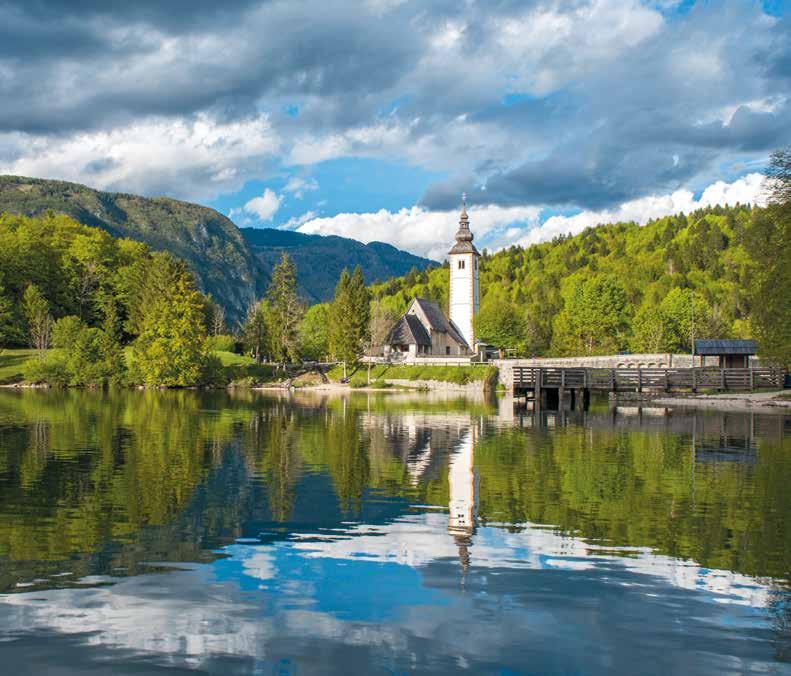
Church of St John the Baptist
All this life is embraced by the rocks of the Julian Alps. Living in this raw alpine environment is a special privilege, because like the Triglav Rose between the rocks,
people have found their place here. By respecting natural resources, they have lived, survived and preserved the natural diversity that prevails in the Bohinj Valley.



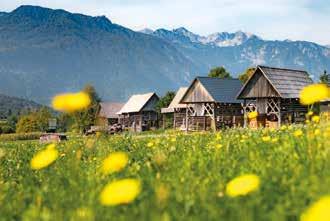



1. Triglav, the highest mountain in Slovenia, is 2864 m high. Slovenians consider it a sacred mountain.
2. Vogel - ski resort, which rises steeply above Lake Bohinj, is easily reachable by a cable car that offers spectacular views of Triglav and the lake.
3. There are many pure spring water sources along every trail.
4. Hayracks in Bohinj, a special architectural feature, mark Bohinj’s landscape.

5. Bohinj people still cherish tradition and culture.
6. Since 1906, the Bohinj railway line has been the shortest rail link between Central Europe and the Adriatic Sea.
7. Savica Waterfall is an important part of Slovenian national identity, often praised in Slovenian poetry.
8. Bohinj cika is an indigenous cattle breed from Bohinj, specially adapted to the mountainous Alpine regions.
LAKE BOHIN J AND THE GREEN COMMITMENT
Lake Bohinj is the largest natural feature and at the same time the largest permanent lake in Slovenia. The lake is deeper than the Slovenian sea and holds 100 million cubic meters of water, which changes three times in a year.
PANORAMIC BOATS TRIGLAVSKA ROŽA AND ZLATOROG
April-November
Electric panoramic boats offer guided tours and together with the Julian Alps Card: Bohinj present one of the attractive options to explore Bohinj without a car.
The entirely refurbished Triglavska roža boat with its thoughtfully designed image and interior offers a unique experience for individuals or larger groups, and is perfect for various events, too.


The shore of Lake Bohinj is almost 11 kilometres long. Just right for a serious hiking tour, offering spectacular views of the mountains and their mirrored images on lake surface.

SAVICA WATERFALL
The double-drop waterfall of the Savica River, which is the main permanent influx to the lake, is 78 metres high and jammed in the Komarča rock wall. It gets its water from the Triglav Lakes Valley. After a long period of rain, the waterfall reaches fascinating 600 metres.
WATER
The landscape in Bohinj has glacial and karst origins. Many rivers, brooks, springs, waterfalls and torrents create the immense water richness of Bohinj.
And water has always had an immense impact on many natural features. The Sava Bohinjka River springs here. It merges with the Sava Dolinka River and thus creates the largest Slovenian river: the Sava River.
The multitude of water in Bohinj is also reflected in the old local saying that the rain multiplies in Bohinj. Folk literature, mythology and storytelling are all bound up with water motifs and characters. The whole natural and human world is connected to water.



Take this opportunity to pour yourself a drink of water during your hikes – find traditional village troughs that all carry the sustainable mission of Bohinj: Bohinj in Bloom.
MOSTNICA GORGE
The Mostnica Gorge and the Voje Valley are among the most beautiful and popular natural sights in Bohinj. They offer views of crystal-clear pools and dramatically water-shaped rocks, as well as diverse flora and fauna and a cultural landscape that has been nurtured by the people through centuries. In summer, enjoy the beautiful scenery of the valley that ends at the Voje Waterfall.
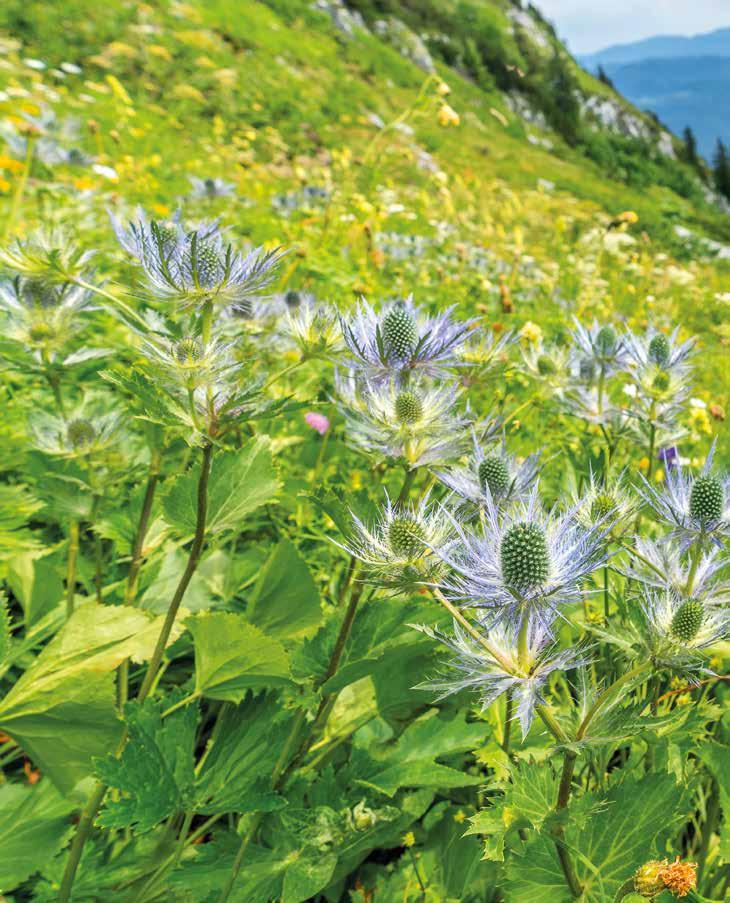
STOP. SMELL THE FLOWERS!
Bohinj is one of the most beautiful examples of well-preserved alpine areas in the entire Alps.

Triglav National Park is home to more than 1,600 species of plants, with some endemic plants standing out among the plants. The Bohinj iris carries the name of Bohinj, while the alpine sea holly, or “Queen of the Mountains”, is still present here. However, four plants are special because they bear the name of Mt Triglav in their name (Triglav rose, Triglav hawksbeard, Triglav cowslip and Triglav gentian).
THE MA J ESTIC MOUNTAINS
100 years of Triglav National Park Nature conservation and responsible mountaineering are carried in Slovenians’ genes.

In the past, the mountains were sacred and considered unclimbable, wrapped in the mystical world of legends and mythology. In 1778, four brave men from Bohinj climbed the highest of all peaks in Slovenia - Triglav.
With this achievement, Slovenians carved the way among alpine nations, mountaineers and enthusiasts who, with scientific expeditions and caution, planning and their hearts, have achieved everything that could be achieved with strong will and the equipment available to them at that time.

View of the Triglav Lakes Valley


1. Triglav was the first of all the national highest peaks in the Alps to be conquered (already in 1778). Among the first climbers were four brave men from Bohinj.
2. Ibex. In the mountains, animals still have their own little piece of paradise, and it’s up to us to observe their activities from afar, unnoticed and undisturbed.
3. The richness of wild flowers: Bohinj Iris (Iiris cengialti vochinensis).
4. Walking on marked paths is the first rule for respectfully entering the magnificent world beneath Triglav.
5. Mountain Rescue Service recommends always using appropriate gear for hiking and mountaineering. And remember to take the mountains seriously!
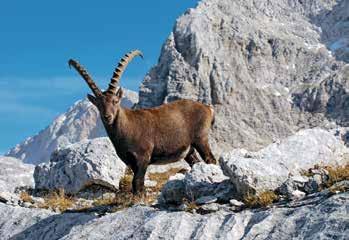
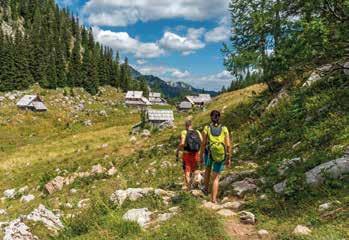


Alpine dairy farming is a tradition in Bohinj that goes back thousands of years. People have been grazing cattle on the high mountain pastures since the Iron Age.


The shepherds blow mountain air into the holes of Bohinj cheese. Fortunately, there are more and more young shepherds and cheesemakers so that the holes can be bigger.

SLOVENIA OUTDOOR APP
HIKING AND CLIMBING IN THE MOUNTAINS IS NOT A SIGHTSEEING RAMBLE.
CHOOSE THE RIGHT TRAIL FOR YOU:
An easy mountain trail is one that you can walk along without needing to use your hands for safety or to help you proceed along the trail.
A difficult mountain trail is a trail that includes more difficult sections where you need to use your hands to ensure safety and where safety features are installed on dangerous sections.
A very difficult mountain trail is one that also involves a certain amount of climbing and where safety equipment is installed to help you over more difficult sections. Very difficult mountain trails include all mountain trails that cross areas where there is permanent snow or ice. To ensure safety on trails of this type, you will need additional equipment such as a helmet, a climbing harness and a belay kit, plus an ice axe and crampons in case of sections crossing snowfields.


Maps of hiking trails are available free of charge from the Slovenia Outdoor and maPZS mobile apps.





PEAT BOGS
On the Pokljuka plateau, high peat bogs have formed in the swampy valleys of former glacial outflows. Small lakes filled with aquatic plants and peat mosses thrived better in the increasingly acidic environment. As these mosses grow continuously on the surface and char in the lower part, the bogs rise. Paths on wooden platforms allow visitors to learn about the plants and animals of this precious ecosystem.




POKL J UKA
The lungs of the Julian Alps
A high karst plateau, formed by the Pokljuka glacier, is the largest forest area in Triglav National Park and covered mostly by spruce forests, stretching from 1,000 to 1,500 metres above sea level.
Pokljuka is also very important due to its high peat bogs that so far in the south of Europe can only be found here in Slovenia. Unspoiled nature and vast spruce forests are the mark of Pokljuka; the slowgrowing spruce wood is so resonant that only the best violins are made out of it.
There are some preserved alpine farms and architectural features on the Pokljuka plateau (Zajamniki); nowadays, however, it is mostly known for hosting world biathlon competitions. Besides exceptional and well-regulated cross-country trails, small ski centres are suitable for families and especially children who are stepping out on skis for the first time.
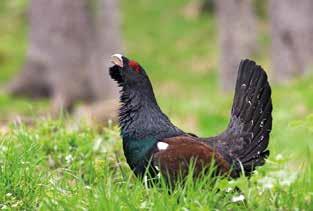
SILENCE FOR THE WESTERN CAPERCAILLIE
The western capercaillie is easily disturbed by any sounds that don’t belong to the natural soundscape. To protect its habitat, barriers and warnings throughout the park limit access to areas where this unique animal lives.
THE FACES OF NATURE, HISTORY AND LIFE
Easy hiking trails that run mostly in the valley will take you to Bohinj’s main natural and cultural sights, and even to more hidden areas. Set off on an exploration of the landscape and its scenic spots and meet the local people, their customs and rich cultural heritage displayed in four museums.

The Bridge “Na Rju” in Bohinj is the winner of the prestigious A+Awards 2022 global architectural award in the transport infrastructure category. The covered wooden footbridge for pedestrians and cyclists is designed like a house on water and resembles a trestle. The bridge is also part of the Bohinj circular cycling route.
Architecture in Bohinj


ALPINE DAIRY FARMING MUSEUM
The museum is located in the former village cheese dairy in Stara Fužina. The equipment on display there is well preserved and could still be used for making genuine Bohinj cheese. Local modern cheese dairies still make cheese according to the old tradition. The Alpine Dairy Farming Museum presents the many years of creating ties between people, the mountains and cattle.

BOHINJ HISTORY MUSEUM (Tomaž
Godec Museum)
3,000 YEARS OF HISTORY
The main museum in Bohinj presents 3,000- year history of the valley and pastures, from ancient history to the 20th century.
It is located in a former leather workshop and presents some exceptional technological heritage and features an exhibition about the First World War.

OPLEN HOUSE
The old rural house in Studor shows how people used to live in the 19th century. In Studor, you simply have to visit the hayracks at the edge of the village, and tourist farms with local food. Mrcina Ranch is also a must see.

HISTORIA BOHINJ PRIVATE MUSEUM COLLECTION
This private collection focuses on the events that marked Bohinj in the 20th century including the construction of the Bohinj tunnel, military items from both World Wars. The time between two World Wars is also presented. The collection is completed by items from the post-war period and the Slovenian War of Independence.

Bohinj museums

OUR GUARANTEE OF ORIGINALITY. THE AUTHENTIC SIGNATURE OF LOCAL PEOPLE.
The certificate guarantees the geographical origin of products. All products and services are certified according to strict standards and criteria by respecting traditional values, local materials, produce and ingredients.
The Bohinj Quality Centre monitors the development and image of certified products, and provides constant professional help and support to local entrepreneurial initiatives.
Bohinjsko/From Bohinj
THE BOHIN J SKO/FROM BOHIN J BRAND IS IN OUR HEARTS
Traditional crafts have been present in Bohinj for centuries. The most well-known craft products are the Gorjuše pipes (“fajfe”), needlework products and woolen products. Wood processing under the Bohinjsko/From Bohinj brand combines tradition and modern design, inspired by the past of Bohinj.




Pipe making is one of the oldest local crafts in Bohinj. Locals started making them in Gorjuše in the 18th century. The most famous Gorjuše pipe is called čedra It has a typically short and straight stem and a somewhat “squeezed” shape with characteristic V-shaped edges on the lower side. In the times of the Austro-Hungarian Empire, the craftsmen from Gorjuše were allowed to sell pipes without taxes.
TASTE THE DELICACIES OF BOHIN J

BOHINJ “TRDINKA” CORN
Once upon a time, “trdinka” corn was an important part of the daily diet. Today, Bohinj people still eat it in the form of “žganci”, which are most often eaten with sour milk and sauerkraut or turnip.

BOHINJ CHEESE
with small or big holes has a long, 140-year tradition and originates from the Swiss Emmental. Due to a different climate and high mountain grazing, the people in Bohinj managed to produce a unique type of cheese which is still produced in the traditional way.
FROM FIELD TO FORK
In the Julian Alps, self-sufficiency is a tradition. We know how to look after ourselves. Linking farms to food establishments and promoting local products help to create short supply chains, which are key to maintaining the authenticity and sustainability of the region.

MOHANT CHEESE
is a local specialty that carries the European designation of origin. Soft cheese of a beige or buttery colour is made from raw cow milk. It has a characteristic intense smell and a spicy flavour, which can have a bitter taste. It was made in Bohinj before the classic cheese production technologies were developed and it is still produced today.


BOHINJ ROE DEER
In the land of forest, traditional dishes have always included deliciously prepared venison. The recipe for preparing Bohinj roe deer is particularly well-known.

BOHINJ CAKE
At one time cheeses and other delicacies would make their way from the Slovenian side of the Julian Alps to the Italian side, while almonds and other such “refined” ingredients would enter the land below Triglav from the opposite direction. A recently restored recipe was the inspiration for a delicious moist almond Bohinj cake with chocolate icing.
BOHINJ BREAKFAST
Your day can’t start better than with the perfect Bohinj Breakfast. And if someone prepares it beautifully with the best ingredients and delivers it to your doorstep, well, that’s the luxury you should indulge in while on holiday. Thank you for trusting local people and their work.

BOHINJ TROUT
In his first cookbook, the Slovenian enlightener Valentin Vodnik also wrote a recipe for Bohinj trout in “trdinka” corn flour made from Bohinj.
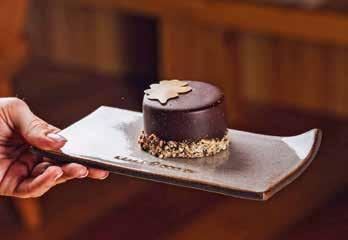
Order Bohinj Breakfast
GENUINE EXPERIENCES
Don’t miss the opportunity to meet local tour guides who will show you the secrets of Bohinj as only the locals know and love it. Enjoy a genuine experience of Bohinj at guided tours and workshops that carry the Bohinjsko/From Bohinj certificate.

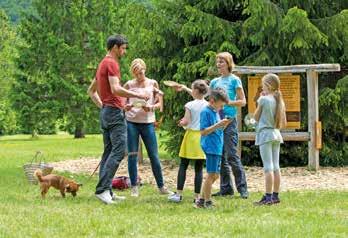
Find products, services, accommodation and culinary experiences with the Bohinjsko/From Bohinj certificate. We guarantee innovation, respect for traditions and support new opportunities for local people, especially the youth.
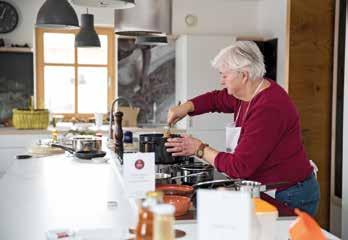

Experiences
Bohinjsko/From Bohinj

ACCOMMODATION
Bohinj offers many accommodation possibilities in hotels, guesthouses, apartments or private rooms. Connect with nature at two campsites –one at Lake Bohinj and the other by the Sava Bohinjka River.






There are also many mountains huts and lodges where mountaineers and hikers can find shelter and rest. Bohinj is committed to preserving nature, biodiversity and the traditional way of life.
Green commitments are considered by the accommodation providers who carry the Bohinjsko/From Bohinj certificate.
Julian Alps Booking Centre
IN CONTACT WITH AN AMAZING NATURE AND CULTURE
Business meetings can also embrace nature.



Excellent cuisine, cultural and natural attractions, experiences at major sporting venues and outdoor activities available in all seasons all contribute to the success of meetings.
Bohinj, a valley between the Alpine peaks and a pristine lake in the heart of the Triglav National Park, is an excellent choice for meetings focused on sustainability.

Here, the connection between the hotels and the green surroundings is enchanting, as are the different experiences that await visitors. From the exploration of the world of wild flowers and forests with forest bath programmes, to the special features of traditional farms and grazing pastures with cheese tasting. Hiking and cycling tours lead to water troughs and waterfalls, while a ride on a modern electric boat on the lake or a cable car ride to the scenic Vogel offer stunning views. And there are many more places to explore.
Bohinj in numbers

2/3 of the area of Bohinj lies in Triglav National Park; therefore, a large part of Bohinj is located in a natural environment with the strictest protection level and it is the largest municipality in the park.

2,864 m, TRIGLAV
Four men from Bohinj first climbed Triglav in 1778.

333 km2 of the Bohinj area can be compared to the size of Malta, but only 5,000 people live in Bohinj, while almost 500,000 people live on the Mediterranean island.
100 million m3 of water, Lake Bohinj can be seen as the largest container of drinking water in Slovenia. The old Bohinj legend goes that it holds enough water to fill a bucket, if the bucket is large enough.

46 orchid varieties can be found in Bohinj. Lady’s slipper is the most appreciated.
1894 the first Slovenian mountain hut - Orožnova koča was opened.
Approx. 70,000 passengers transferred, significantly contributing to the reduction of carbon footprint.


More than 800.000
overnight stays reflect the inseparable link between the small community and tourism.

100 years have passed since the first national Nordic championship in Bohinj (Kingdom of Serbs, Croats and Slovenes at that time).
70 Bohinjsko/From Bohinj certificate holders offer the best, most genuine and innovative experiences, culinary specialities, products and accommodation possibilities.

The 1st woman who climbed Triglav was Rozalija Škantar from Bohinj. She achieved this in 1870.
4 flowers are named after Triglav, which is quite a unique feature in the world of botany, considering the fact that rocky peaks are not covered with flowers.

6,327m long railway tunnel connects Bohinj with the Primorska region and belongs to the longest tunnels in the Alps – the Bohinj Tunnel was opened in 1906 by Archduke Franz Ferdinand.

1,000 metres is the altitude that the cable car to Vogel overcomes in less than 5 minutes and thus puts it among the fastest and steepest cable car lines in Europe.
NO PLACE FOR BOREDOM
You will not get bored in Bohinj. Away from the city hustle and bustle, you can feel the pulse of nature by walking, riding, visiting pastures or cycling. In winter, you can have great fun on snow.
Your children will enjoy cycling, horse riding or flying down the water slides at the Aquapark. You simply have to visit the end of the lake, Ukanc, where the Zlatorog Fairy Trail awaits your children. It will take them to an enchanted world of mountain legends.


Vogel, a pasture in summer and a ski resort in winter, with the most beautiful view of Triglav and Lake Bohinj. Reach Vogel with one of the steepest and fastest cable cars in the Alps.



1. Bad weather in Bohinj cannot be a reason to be in a bad mood. Bohinj Aquapark is open all year round.
2. The Zlatorog Fairy Trail in Ukanc takes children to the world of Bohinj fairy tales. The trail is designed to stimulate children’s senses, so we recommend that you walk along it with the dedicated brochure.
3. The trails are well marked and well maintained, but you should go responsibly and be properly equipped. Choose the routes that are right for you.



4. The sensitive natural environment of the Triglav National Park means that cyclists are directed towards roads and paths where cycling is expressly permitted.
5. Vogel and Vogar are the most popular paragliding sites, as they promise stunning views of the lake and mountains.
6. Bohinj is an alpine water destination, with rivers and streams offering plenty of activities. Consider the rules that apply on and around Lake Bohinj.

LONG-DISTANCE HIKING TRAIL
The Juliana Trail is a trail for heroes of a different kind. Those still capable of seeing this fragile Alpine world the way it deserves to be seen.
This circular trail connects the world of the Julian Alps surrounding Triglav, their highest peak, in 16 stages. It is not aimed at “peak baggers” (those attempting to reach a collection of summits) and it is certainly not for those trying to conquer the overpopulated summit of Triglav itself.
The starting points of the stages are for the most part connected by public transport, making it possible to set off on the trail from the same accommodation for several days in a row, which is another way to be sustainable.
Total length: 27O km
Number of stages: 16
Average stage length: 17,5 km (4–5 hours)
Total elevation gain/loss: 7.163 m ascent, 7.163 m descent
Discover more about the Juliana Trail julian-alps.com

Use the free Juliana Trail mobile App to plan your route.


Juliana Trail Extra stages to Breginjski Kot Access stages from Brda Julian Alps
The Soča
KRANJSKA GORA
TOLMIN
KANAL
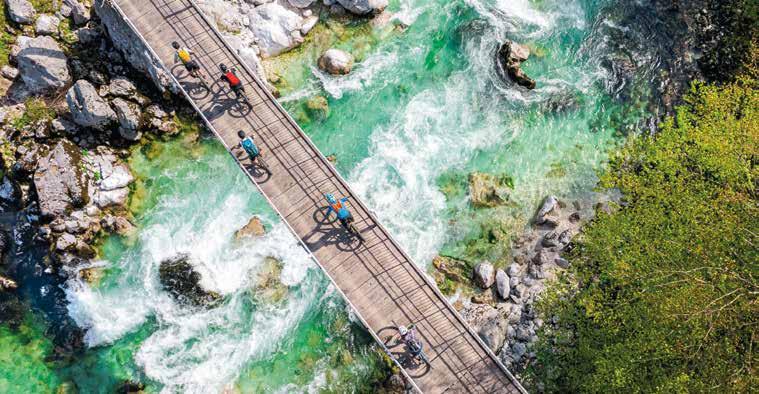
CIRCULAR BIKE TOUR
The 1,8OO-kilometre Slovenian Mountain Bike Trail runs across the mountaineous region of Slovenia. It includes a loop around the Julian Alps in the form of the circular 29O-kilometre Juliana Bike trail, intended for bicycles with tyres suitable for more demanding terrain.
Total length: 29O km
Number of stages: 7
Average stage length: 4O km
Total elevation gain/loss: 8.5OO m

Juliana Bike Access stages Julian Alps
KRANJSKA GORA
BOHINJ
BOVEC
KOBARID
TOLMIN
KANAL
Digital map of the Juliana Bike long-distance bike trail julian-alps.com
SPRING

In spring, when the first primroses blossom and meadows and forests are in full bloom, 1,600 different types of flowers turn Bohinj into a large natural botanical garden.
A garden that grows and changes every day. A garden that we do not water, dig through, nor weed ... we just let it grow its own way. This garden is the core of the International Wild Flower Festival. Guided botanical excursions take us to areas of rocks, meadows and forests, where we can see different flowers.





INTERNATIONAL WILD FLOWER FESTIVAL
May–June
In more than two decades, the festival has developed into an extensive event that inspires and expands its circle of fans and admirers.
Today, the festival connects the people of Bohinj with guests who know how to appreciate the efforts to preserve natural heritage and the balance between people and fragile nature.
The festival is a tribute to the wild flower and floral wealth of the Julian Alps. It conveys the message that the conservation of biodiversity is an invaluable asset to be passed on to future generations.
At the end of May, we celebrate flowers in a variety of venues with botanical walks, culinary, photography and painting workshops, theatre performances, markets, intergenerational gatherings and floral cuisine. This unique and preserved environment attracts professionals from different fields to reflect on sustainable practices and the future.

333 km2
1,600 plant species
46 types of orchids
5 endemic plants
4 Triglav flowers
International Wild Flower Festival in Bohinj
SUMMER
Locals know that Bohinj is enchanting in all seasons, but most guests visit Bohinj in summer.
There are many options to find shade and escape the summer heat. Mountains, forests, Sava Bohinjka River, narrow canyons and the cascading waterfalls. There are many cycling, hiking, mountaineering, water-based, and other sports activities just waiting to be experienced.
Enjoy the natural features of Bohinj to the fullest and use public transport, remote car parks that provide transfer to the lake and trailheads, electric boats on the lake, and especially bicycles. Always wear proper shoes and use suitable hiking gear to hike and visit the high mountains. Do not underestimate the mountains and overestimate your capabilities. We assure you that you will take only beautiful memories back home.

Take it slow and row at the pace of the water by renting a traditional boat.









FESTIVALS AND OTHER EVENTS IN SUMMER
Experience summer differently. At a concert or in the local market, where you can choose among various products, sport and traditional events. Bohinj is certainly full of activities and unique beauty in summer, so it’s worth planning your visit in advance to make the most of everything it has to offer.
The acoustics of Bohinj’s venues offer a unique listening experience. Enjoy classical music at the Summer Music Festival.
Events in Bohinj


Maps of hiking and cycling routes are available free of charge in the Slovenia Outdoor app.

AUTUMN
In autumn, Bohinj is draped in beautiful colours and snow starts covering mountain peaks.
Outside the main summer tourist season, without crowds, Bohinj is the perfect place for zen and meditation. This is the time when nature shows the luxurious fragility of its peace, when the sounds accompanying wood cutting and the poetic rustling of trees can hardly be heard miles away. And whatever breaks the silence, it sounds even sweeter in autumn.
The world in Bohinj speaks with the warm voice of a wise “old man”, waiting for a chance to catch us unaware in the silent intimacy of personal thoughts and making us laugh. Activities can be different in autumn. Without stress. The lake can still be warm, the hills are still here, fishermen enjoy the peace and quiet and locals stop running errands.
Mornings are longer and evenings smell of the rich local cuisine. Fireplaces are lit in the evenings and in the pleasant melancholy the memories of summer are merged in the satisfaction of an autumn day well spent.

Ball: cows rule Bohinj’s mountains and pastures. Every year in autumn, they are festively welcomed back in the valley at a traditional event that has taken place for more than 60 years. The

Cows’
Cows’ Ball in Ukanc, where Bohinj cows are queens.
Cows’ Ball





Guided hikes invite you to visit scenic peaks and discover unknown stories. After active hill-walking, visit Bohinj restaurants that offer culinary delights, as chefs prepare a special mix of menus with autumn flavours at this time of year.
“OKO” PHOTO FESTIVAL
Question what you see through ethical and responsible photography. When the essence becomes visible to the eye and expressed in promoting a respectful attitude to nature. The OKO Photo Festival calls you to take action today to understand the future of nature conservation.

CHEESE AND WINE FESTIVAL
is the perfect venue in Bohinj for people to taste great wine and cheese from various parts of Slovenia. The festival brings together the best wine and cheese producers who present their premium and popular products.

FLY FISHING FESTIVAL
Experienced fishermen swear that autumn is the best time for fishing. Bohinj is exceptionally beautiful in September, weather is stable, water level is suitable, water is not too warm and the fish are active. And there are not many other activities happening on water either. Therefore, the festival time is the perfect time for fly fishing buffs to enjoy this piece of heaven.
Photo Festival
Cheese and Wine Festival
WINTER
Bohinj in winter can offer idyllic scenes of nature, remarkably characterised by Lake Bohinj’s crystal water.
Whether or not the winter landscape wears its white cloak, it is not only the lake’s water that makes a strong impression on the landscape.





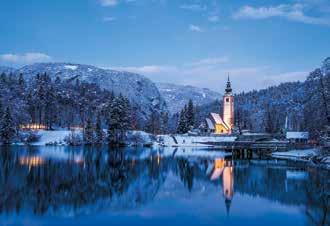
Bohinj is a true winter fairytale, where snow lovers will find everything they need for the perfect winter experience. Even if there is no snow in winter, there are always opportunities to spend time outside in Bohinj.
In the meantime, walk along the hiking trails in the valley with a view of the lake or visit the huts that are open in winter.
The Vogel Ski Centre offers the largest snow park in Slovenia with adrenaline experiences for freestyle skiers and snowboarders, in addition to 13 slopes on varied terrain.
Skiing with great views or conveniently in the valley - all ski resorts can be reached by SKI BUS during the main ski season.
- 7 ski centres:
- 25 ski lifts
- 33 slopes
- 28 km of slopes
- 70 km of cross-country skiing tracks
In good winter conditions, Bohinj Valley offers up to 70 kilometres of cross-country skiing trails, managed by the local people.
The biathlon stadium on Pokljuka hosts World Cup biathlon competitions and has also hosted the World and European Championships.
Cross-country skiing on well-prepared tracks on the Pokljuka plateau is a must.

WINTER IN THE HIGH MOUNTAINS
Skis have always been a tool for travelling on snow, as have snowshoes. The growing popularity of ski touring, which allows us to explore remote mountain areas and experience true winter conditions, requires a great deal of experience and orienteering skills. Always set off with a guide who holds a winter guiding license and be highly respectful of animals. In snowy landscapes, animals spend a lot of energy to survive, which is hard to replenish. Let’s respect their peace and avoid entering designated quiet zones.
BOHINJ SKI TOURING FESTIVAL
In March, you are invited to the high mountain area for guided ski tours, workshops, equipment testing, lectures, children’s programme, and more. This is the first festival of this kind ever held in Slovenia.

Bohinj Ski Touring Festival

GUIDED SKI TOURING EXPEDITION IN THE JULIAN ALPS
Total length: 52 km
Number of stages: 4 (x 2)
Average stage length: 13 km (5–6 hours)
Total elevation gain/loss: 4.367 m ascent, 4.891 m descent
More information on Juliana SkiTour julian-alps.com

Juliana SkiTour is a four-day ski touring expedition in the Julian Alps. It is not a longdistance, continuous expedition but a combination of four different ski tours.
The combination of these four tours, together with transfers, offers a ski touring adventure covering the whole of the Julian Alps, from Kranjska Gora in the north to Tolmin in the south. It can also be done in the opposite direction. Each of the four stages is offered in two variants, making it easier to adapt to the actual winter conditions at the time of departure.
The essential idea of the tour is a ski touring expedition where you don’t have to sleep in cold mountain bivouacs but instead return to the valley at the end of each day for a hot shower, a normal bed and a decent dinner.
MOBILITY HAND-IN-HAND WITH NATURE


Bohinj has to cope with the particular challenges posed by dispersed population, the pressures of daily visitors and the infrastructural possibilities. Bus and train connections to and within Bohinj include many discounts. Check out the benefits of the Julian Alps: Bohinj card and use public transport and cheaper car parks to avoid unnecessary costs and crowds at Lake Bohinj.
Sustainable mobility in Bohinj is also understood in a rather conservative way. Encouraged by the beauty of the Alpine landscape and our presence in Triglav National Park, which in itself requires us to move around Bohinj responsibly and respectfully, we walk and cycle, thus freeing ourselves from the everyday hectic.
Tip: Reduce your carbon footprint by letting the car-train take you and your car from the Primorska region (Nova Gorica, Soča Valley) to Bohinj.

JULIAN ALPS CARD: BOHINJ
FREE TRANSPORT AND VISIT TO NATURAL SIGHTS, MUSEUMS AND MUCH MORE for guests who stay more than two days in Bohinj*
The Julian Alps Card, issued for the different destinations of Bled, Bohinj, Soča Valley, Kranjska Gora, Radovljica and Jesenice, offers free public transport, parking and attraction tickets and various discounts.
More information
Julian Alps Card: Bohinj

Traffic in Bohinj





WELCOME
TO THE GREEN, PEACEFUL AND SAFE
COUNTRY
The Julian Alps are one of the leading tourist regions in Slovenia, which is one of the most sustainable tourist destinations in the world. Slovenia is ranked among the five safest countries in the world and was among the first destinations to receive the Safe Travels stamp from the World Travel and Tourism Council.
Perfect time for visit: see the best of Bohinj in off-peak tourist season – in May, June, September and October.
PEAK SEASON: July, August. The warmest month is August (to 30oC), the coldest months are January and February (to -15oC).
Snow cover is thickest in February and March.
Temperature changes are also quite common in warm months.
Make sure that you have some additional clothes also in summer. Always wear appropriate hiking shoes.
Savica Waterfall
Mostnica Waterfall
Mostnica Gorge
Church of St John the Baptist
Vodnik viewpoint
Vogel Peč 630
Ribnica waterfalls
Govic
Peat bog Goreljek
Kozji hrbet
Sports Centre Triglav Pokljuka
Nordijski center Nordic Centre Polje
0 1 2 3 4 5 km
0 1 2 3 4 5 km

HOW TO REACH BOHINJ:
By bus:
Regular public bus route: Ljubljana–Bled–Bohinj
by car train:
Nova Gorica–Most na Soči–Podbrdo–Bohinjska Bistrica



BOHINJ

by train:
Ljubljana*–Jesenice–Bohinjska Bistrica (*connections to Zagreb, Maribor, Graz, Vienna, Trieste, Venice)
Villach*–Jesenice–Bohinjska Bistrica (*connections to Tarvisio, Villach, Klagenfurt, Vienna, Salzburg, Munich)
Nova Gorica*–Bohinjska Bistrica (*connections to Gorizia, Trieste, Venice, Udine)

Airports: (LJU) Ljubljana (KLU) Klagenfurt (TRS) Trieste (ZAG) Zagreb
Ljubljana 80 km
Zagreb (HR) 223 km
Munich (DE)
Vienna (AT)
Berlin (DE) 970 km
London (GB) 1,520 km
Pokljuška soteska
TRIGLAV NATIONAL PARK
Bled
Bohinjska Bistrica
Bovec
Kranjska Gora
Tolmin
Jesenice
Kobarid
Triglav 2864
Radovljica
WELCOME TO BOHINJ.
You can enjoy Bohinj in every season and any weather. We will welcome you with open armsin our own way to make you feel special.
But you won’t always be our top priority. This is reserved for the Bohinj cows. Come and you’ll understand why ...
bohinj.si
Information: #bohinj #ifeelsLOVEnia #lakebohinj
Turizem Bohinj, Stara Fužina 38, 4265 Bohinjsko jezero, t: +386 (0)4 574 75 90, e: info@bohinj.si /lakebohinj /lakebohinj /lakebohinj www.bohinj.si
Photos: Jošt Gantar, Matevž Lenarčič, Joža Mihelič, Tomaž Mihelič, Mojca Odar, Klemen Razinger, Gregor Skoberne, Mitja Sodja, Peter Strgar, Aleš Zdešar, Ciril Jazbec, source: www.slovenia.info, Gregor Kofler, Sandra Staniša, Matic Lipar, Žiga Koren, Domen Bizjak, Katja Jemec, Žiga Intihar, Anže Čokl, Archive of Vogel, Archive of Bohinj ECO Hotel, Archive of Turizem Bohinj. Editors: dr. Jana Vilman, Marko Viduka, Nežka Božnar. Texts: Marko Viduka, Ines Drame. Translation: Doris Sodja. Design: Nežka Božnar, Ivana Kadivec, dr. Jana Vilman. Illustrations, illustrative map, image processing: Jaka Modic. Print: Tiskarna Medium. Publisher: Turizem Bohinj. Copies: 7.000. December 2024.
